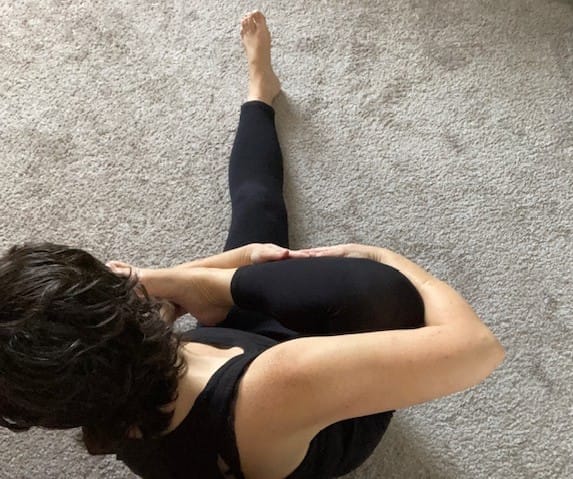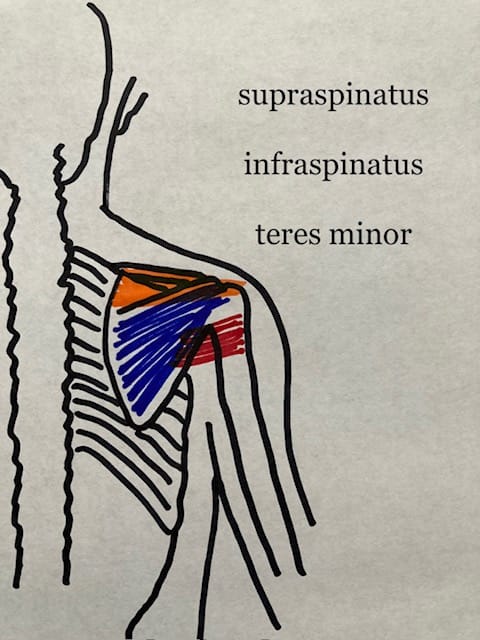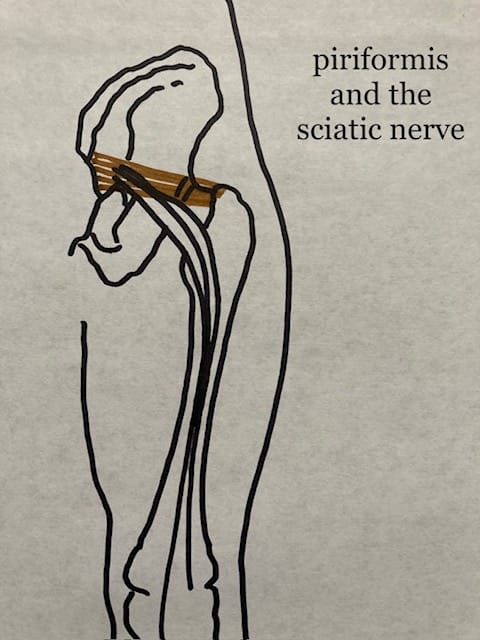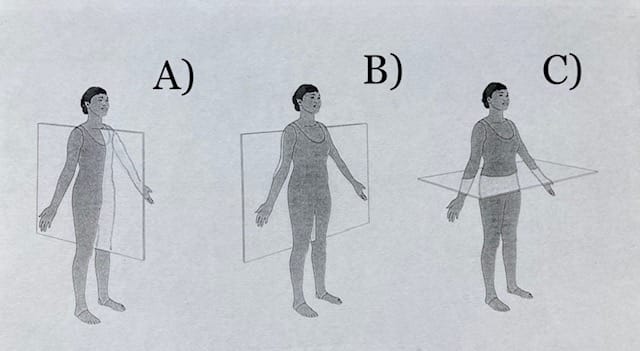Common Self? Diagnoses from Massage Clients

It’s not unusual these days for all of us to self-diagnose our ailments after searching online for our symptoms. Massage therapists are tasked with responding to the client’s complaints whether or not a doctor has diagnosed them. By far the two most common complaints clients present to me are rotator cuff issues and sciatica. Here are my comments on each from the perspective of a massage therapist.
The rotator cuff is not a specific structure in the shoulder, but rather the four muscles which, together, move the shoulder through its rotation, as when pitching a baseball or reaching into the back seat while driving. Specifically, the ball of the upper arm bone (humerus) is rotated backward, upward, and forward in its socket, which is formed where that arm bone meets with the shoulder blade (scapula) and collar bone (clavicle). Hence, the shoulder is called a ball-and-socket joint (as is the hip joint). Cartilage within and surrounding the socket is susceptible to tears, and such injuries may lead to rotator cuff issues and necessitate surgery. While massage therapy cannot alleviate cartilage tears, it can certainly help to recondition rotator cuff muscles before and after shoulder surgery. If you’re opting to delay rotator cuff surgery for various reasons, massage therapy can help manage symptoms in the interim.
It’s rare for a client to know which of their four muscles are implicated in rotator cuff malfunction, even if the core issue does indeed reside in the muscles. Not to worry as, typically, three of the four muscles of the rotator cuff are worked in any deep tissue back massage: supraspinatus, infraspinatus, and teres minor (see image), which lie deep to the trapezius muscles. The fourth muscle is subscapularis, and it’s the least palpable, as it’s flush with the other side of the shoulder blade, facing the front of the body. But some lateral fibers of subscapularis can be accessed through the armpit.

When clients tell me they have rotator cuff issues, whether recently self-diagnosed or long-and-storied, I usually ask them to show me their range of motion, and I move my arms so they will copy my movements, if they can. This gives me a lot of information very quickly (no time for assessment in certain workplaces), and I know to what extent I can incorporate joint movements when treating their upper arm and shoulder musculature. Most clients who claim rotator cuff issues love my Neuromuscular Reset of the Shoulder Girdle, explained in detail here.
Sciatica is a condition named after the sciatic nerve, which innervates four posterior thigh muscles and then branches off to innervate 15 muscles in the leg and 11 muscles in the foot! The sciatic nerve originates from the spinal cord at (lumbar vertebra) L4 to (sacral vertebra) S3 and then runs under or through the piriformis muscle in the buttocks. The piriformis laterally rotates the hip, such as when you step your foot behind you and turn the hip away to yield to an oncoming person in an aisle of an airplane, for example, or a narrow doorway. Other muscles join piriformis in this action, but piriformis is implicated in sciatica due to its location.
When the sciatic nerve is impinged by a tight piriformis muscle, it causes pain in the buttocks and down the back of the leg. The piriformis muscle lies deep to the gluteal muscles, and massage therapy and home stretching can bring relief to a muscular cause of sciatica. However, if the sciatic nerve is impinged by a compressed or misaligned spine, massage therapy can only do so much; the client is better served by an osteopath or chiropractor.

Regardless of sciatica’s cause, trigger points can form in piriformis and in the gluteal muscles and cause sciatic-path pain as far as the ankle and sole of the foot. A trigger point is an area of dysfunction at the cellular level within a muscle, causing radiating local pain. Trigger points may prompt the body to forge alternate neural pathways, down which it refers more pain! Trigger points manifest within unhealthy muscle tissue: tight, adhered or stuck in a shortened state, lacking oxygen, nutrients, and water, and retaining toxins. Unhealthy muscle tissue can compress that muscle’s nerves, which further exacerbates the muscle’s unhealthy state – it’s a vicious circle that massage therapy and lifestyle changes can help break.
We must move our bodies, drink water, and stop ingesting toxins! I’m right here with you. I love the stretch pictured above but, I admit, I don’t do it enough. For the photo I turned my head so you could see that I’m cradling my leg, but try to keep your head and spine aligned and straight. You’ll immediately feel the stretch in the buttock muscles, especially at the attachments to bone. Slowly and gently rotate your entire torso while keeping your butt on the floor to further stretch particular muscle fibers. Release your foot and place it on the floor outside your opposite thigh, hugging your knee but straightening your spine. Repeat on the other side. Only do this is if it's without pain and, again, move slowly.





Member discussion